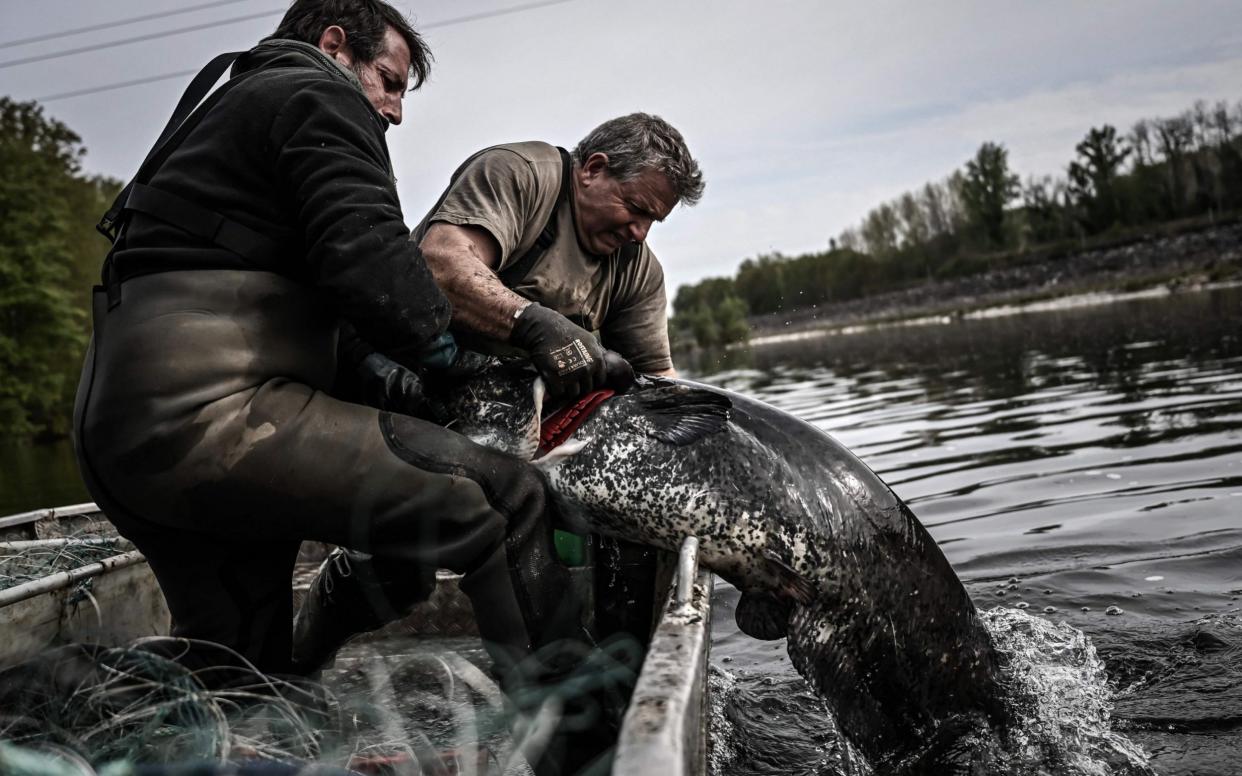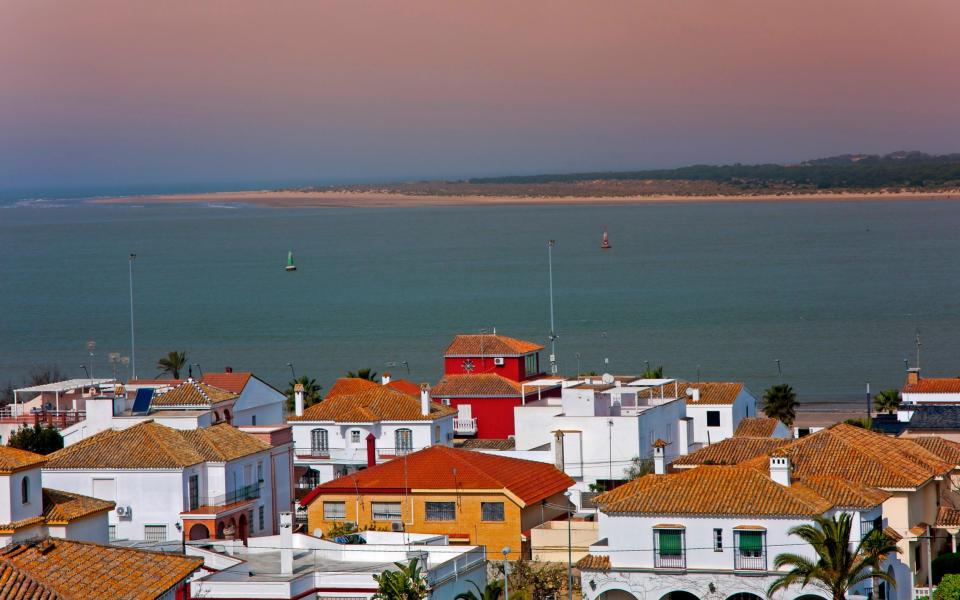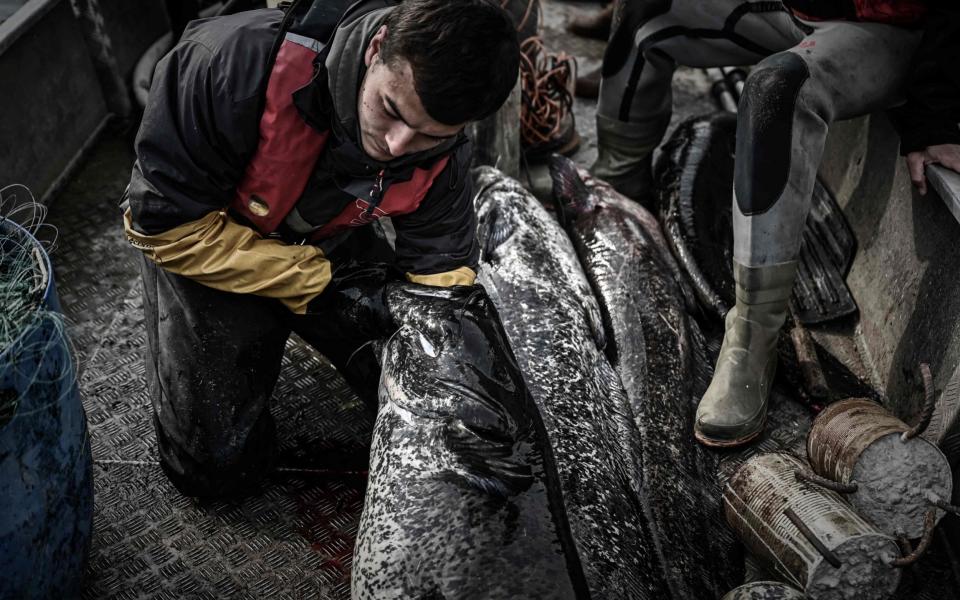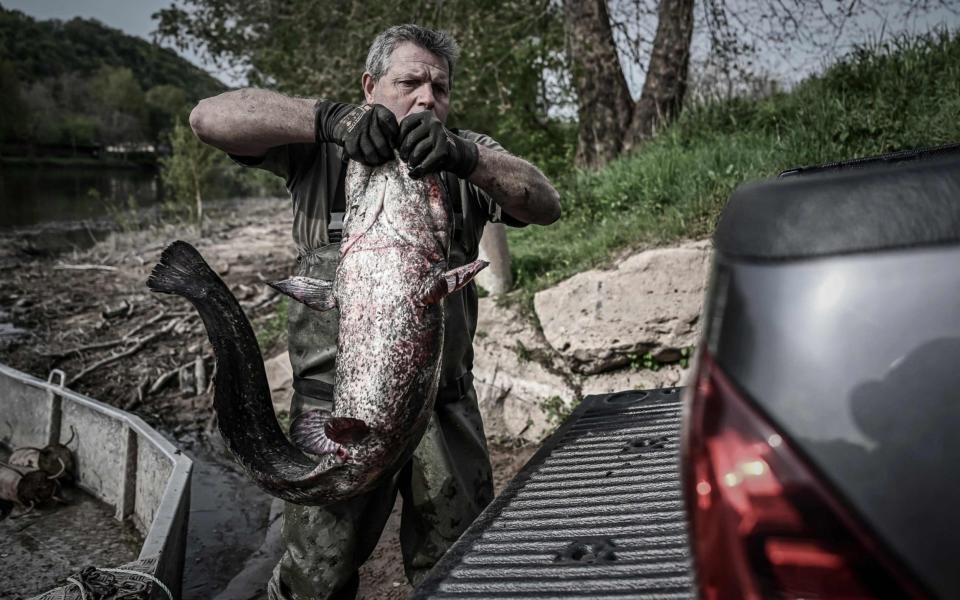Fishermen beg to tackle invasion of monstrous catfish conquering Europe

Nobody knows who slipped the first Wels catfish into the calm rivers of southern Spain.
Some say it was a fanatical German angler, others that locals illegally introduced the beasts over a decade ago in the hope of luring sports fishermen to the region.
What all agree on is that the result has been catastrophe.
Environmentalists and industry groups are now begging authorities to step in before the invasive species reaches the region's pristine ecosystem that sustains the fishing industry of Cadiz.
Last month a 220lb monster was spotted just a few miles away from Iznájar, a quiet riverside town near the Doñana national park, a vital wetland nature reserve.
The Wels Catfish is by some margin the largest true freshwater fish in Europe. Native to the continent’s central and Eastern river basins.

Many adults grow as long as 7ft and can weigh up to 143lb, lunging out of the water to catch their prey. The female produces up to 30,000 eggs per kilogram of body weight, and the spread of the species is crowding out rival fish.
Since 72-year-old fisherman Manuel Ramírez first caught a catfish in Iznájar, he has noticed that other species have slowly decreased in number, with their average size shrinking too — a trend that has only accelerated in recent years.
“They eat everything,” sighs Mr Ramírez - fish, turtles, crabs, ducks and even, some say, dogs. Carlos Fernández, a Zoologist at the University of Cordoba, says if the catfish reach the Guadalquivir river basin they will devour everything in their path.
“It’s an extraordinarily rich ecosystem — one of the richest that catfish have ever threatened in Spain,” he warns, pointing to the abundance of red crab, bass and anchovies.
“It has a life expectancy of 30 years. As the third largest freshwater fish on earth, the catfish is no joking matter. Everyday they need to eat the equivalent of 2 per cent of their total weight. So that can be 2kg of whatever they find in their surroundings.”

Environmentalists have called on the Andalucian government to intervene, to little avail. In the meantime Mr Fernández has provided Madrid with a draft of measures they could take to control the creatures’ spread.
The government, he says, must use ‘scientific artillery’ to block the path of the fish, which has flourished in the region because of a lack of predators.
He wants to undertake a thorough analysis of environmental DNA to understand the catfish population size and its spread, and use electrofishing techniques to attract the specimens, stun them, and take them out of the water.
“They will fight back; as an evolutionary unit, catfish have been evolving for millions of years,” warns Fernández. Regional authorities did not respond to a request for comment.
The catfish issue is not unique to southern Spain. In the Dordogne in France - home to thousands of Brits - local authorities have recently launched a campaign to fish as many of the monsters as possible.
Ecologists in southern France have recently raised concerns about catfish lurching out of rivers and snatching whole pigeons.
“I knew that killer whales can beach themselves [to catch seals], but I had never seen that kind of behaviour with fish,” Frédéric Santoul, from the University of Toulouse, told National Geographic earlier this year.
Other experts say the invasive catfish are fundamentally altering river ecosystems in western Europe, which is already struggling from the impacts of dams, water pollution, and overfishing.

There are fears that warming temperatures and changing rainfall patterns attributed to climate change could create even more favourable conditions for the wels catfish.
But the first catfish in western Europe were thought to have been first introduced into Spain’s Ebro River, which runs from Cantabria to Catalonia, along the north of the country.
Fishermen in Spain have volunteered to tackle the threat themselves, but find their way blocked by tight government regulations. Under Spain’s environmental laws, anyone who lands a catfish is meant to call the Guardia Civil and wait for them to pick it up.
Even so much as transporting the fish, or throwing it back in the water, is considered a crime. Paco, a long-time fisherman who asked for his surname not to be used, says the authorities should encourage anglers to catch as many of the creatures as possible.
“If they would let us fish them and kill them, in five years there would be less than 5 per cent left,” he boasts, sitting by the Iznájar reservoir armed with a couple of rods.
Currently, however, the large rods and thicker threads that would make catching catfish easier are banned by the government.
Antonio Manuel Malagón Serrano, the owner of a fishing store called DMAX Pesca, a 40-minute car ride from Iznájar, complains that the migrant fish are costing him business.
“My store is focused on fishing gear to catch other species of fish, like the carp or black bass – but catfish are eating them up, and I can’t sell the material needed to fish these catfish,” he says.
But for Mr Fernandez, bringing fishermen on board is not the answer. It was their enjoyment of reeling in the Wels Catfish that brought it to these waters - they cannot be trusted, he says, to truly let go of the catch.

